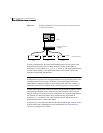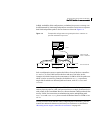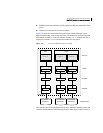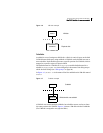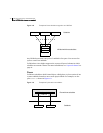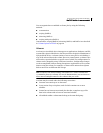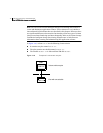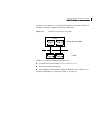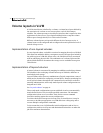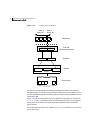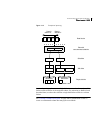
31Understanding Veritas Volume Manager
How VxVM handles storage management
You can organize data on subdisks to form a plex by using the following
methods:
■ concatenation
■ striping (RAID-0)
■ mirroring (RAID-1)
■ striping with parity (RAID-5)
Concatenation, striping (RAID-0), mirroring (RAID-1) and RAID-5 are described
in “Volume layouts in VxVM” on page 34.
Volumes
A volume is a virtual disk device that appears to applications, databases, and file
systems like a physical disk device, but does not have the physical limitations of
a physical disk device. A volume consists of one or more plexes, each holding a
copy of the selected data in the volume. Due to its virtual nature, a volume is not
restricted to a particular disk or a specific area of a disk. The configuration of a
volume can be changed by using VxVM user interfaces. Configuration changes
can be accomplished without causing disruption to applications or file systems
that are using the volume. For example, a volume can be mirrored on separate
disks or moved to use different disk storage.
Note: VxVM uses the default naming conventions of vol## for volumes and
vol##-## for plexes in a volume. For ease of administration, you can choose to
select more meaningful names for the volumes that you create.
A volume may be created under the following constraints:
■ Its name can contain up to 31 characters.
■ It can consist of up to 32 plexes, each of which contains one or more
subdisks.
■ It must have at least one associated plex that has a complete copy of the
data in the volume with at least one associated subdisk.
■ All subdisks within a volume must belong to the same disk group.




